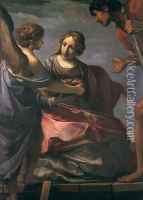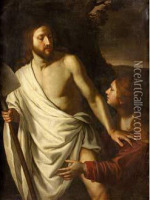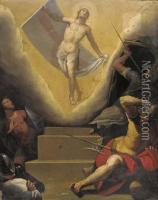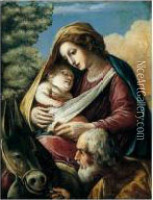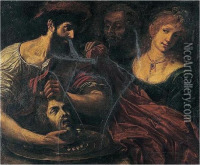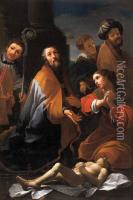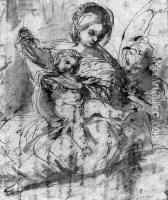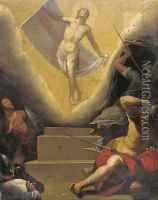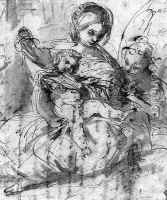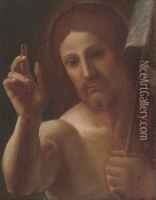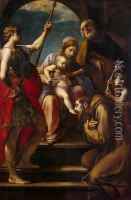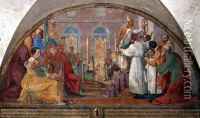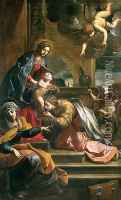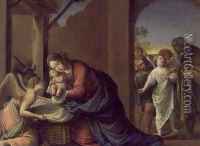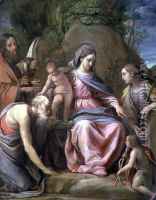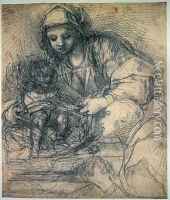Alessandro Tiarini Paintings
Alessandro Tiarini was an Italian Baroque painter of the Bolognese School. Born in Bologna on March 20, 1577, he initially trained under Bartolomeo Cesi and later with Ludovico Carracci, who was a pivotal figure in the development of the Baroque style in Bologna. Tiarini's style was significantly influenced by his association with the Carracci Academy, which was renowned for its emphasis on naturalism and expressive figures.
After his initial training in Bologna, Tiarini spent a significant period in Florence, where he was influenced by the works of other Baroque artists such as Domenico Passignano and Cristofano Allori. His period in Florence was crucial for the development of his own style, which became characterized by dramatic intensity and a strong sense of movement, typical of the Baroque period.
Tiarini returned to Bologna around 1610 and became an important figure in the city's artistic scene. He was known for his religious and mythological scenes, which were characterized by dynamic compositions and rich color palettes. Throughout his career, Tiarini was commissioned to work on numerous prestigious projects, including frescoes for the churches of San Michele in Bosco and the Cathedral of Reggio Emilia.
One of Tiarini's significant contributions to the art world was his role as a teacher. He instructed several notable artists who would go on to contribute to the Baroque movement. Despite facing competition from other prominent artists of the time, Tiarini's works were highly sought after, and he enjoyed a successful career until his death in Bologna on February 8, 1668.
Tiarini's legacy is preserved through his numerous paintings that can be found across Italy, particularly in Bologna, Florence, and Reggio Emilia. His works are noted for their emotional intensity and the skillful use of chiaroscuro, a technique that employs the stark contrast of light and shadow to achieve a sense of volume and depth in painting. Tiarini remains an important figure in the history of Italian Baroque painting, reflecting the vibrant and dynamic spirit of the era in which he lived and worked.
